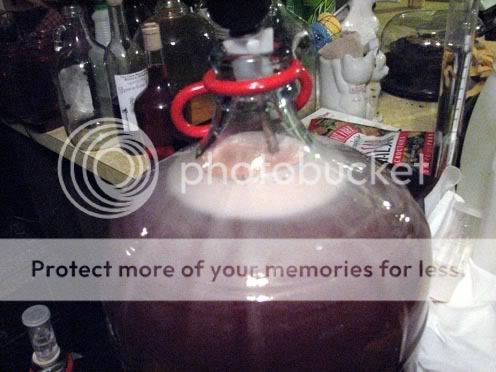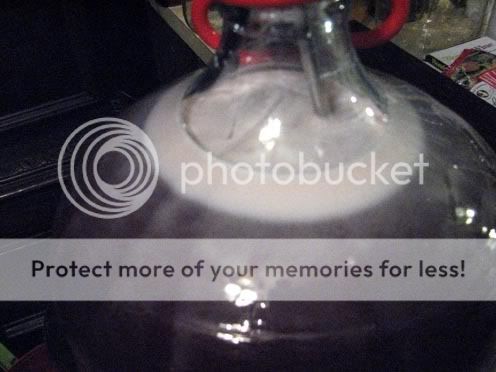Racked and stabilized the Black Widow early this morning but due to time constraints I did not degass until this evening. I added 5/8 tsp. Potassium Metabisulphite and 2-1/2 tsp Sorbate dissolved in about 3oz warm water and stirred it in good and let it set until this evening.


It took about 8 minutes of stirring to degass this one but I am confident a good job was accomplished.


For those interested, here is a short video of the degassing. I would recommend turning your speakers down unless you enjoy hearing a drill running with a tv blaring in the background.
http://s35.photobucket.com/albums/d186/wjjames26011/?action=view&current=blackberrydegassed.flv
I drew off a sample and it has gained a richer color as well as more complex flavors. For a lack of better terminology at the moment...It was good!!

I added 3 oz of French oak, Medium Toast which I will leave in contact with the wine for 2 weeks and then begin sampling until I reach the level of oakiness I desire. In the Blackberry I like just a hint of oak to it.


The Black Widow Blackberry is now all snug in it's black tee shirt and beginning the clearing process.I anticipate the next racking will occur around September 1st.Edited by: Waldo


It took about 8 minutes of stirring to degass this one but I am confident a good job was accomplished.


For those interested, here is a short video of the degassing. I would recommend turning your speakers down unless you enjoy hearing a drill running with a tv blaring in the background.
http://s35.photobucket.com/albums/d186/wjjames26011/?action=view&current=blackberrydegassed.flv
I drew off a sample and it has gained a richer color as well as more complex flavors. For a lack of better terminology at the moment...It was good!!

I added 3 oz of French oak, Medium Toast which I will leave in contact with the wine for 2 weeks and then begin sampling until I reach the level of oakiness I desire. In the Blackberry I like just a hint of oak to it.


The Black Widow Blackberry is now all snug in it's black tee shirt and beginning the clearing process.I anticipate the next racking will occur around September 1st.Edited by: Waldo









 amespace prefix = o ns = "urn
amespace prefix = o ns = "urn chemas-microsoft-com
chemas-microsoft-com
